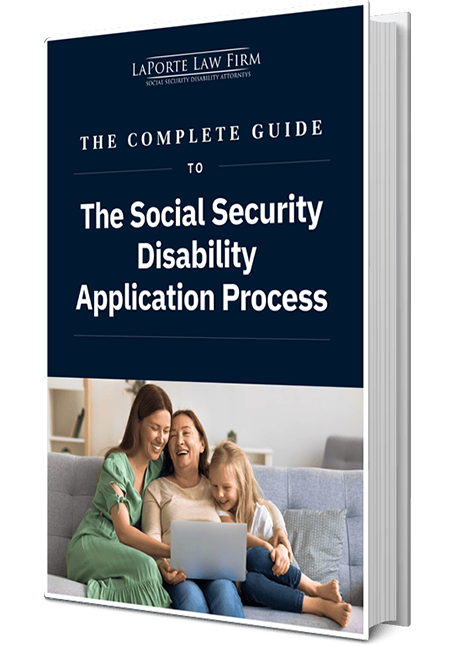
Receiving a lump-sum back payment can feel like great relief. A sudden welcome windfall can be a result of a legal settlement, an insurance claim, or back pay from winning your Social Security disability case.
But amid the excitement, have you paused to consider how taxes might impact your payout? Will you owe any taxes? Are there exceptions? Read on to understand the implications before you spend a dime of that lump sum.
Understanding Lump-Sum Back Payments
A lump-sum back payment is a one-time payout of money that covers amounts owed from previous periods. These payments are common when there has been a delay in awarding benefits or settling a claim.
Here are some examples of lump-sum back payments you might receive:
- Social Security Disability Insurance (SSDI) or Supplemental Security Income (SSI) back pay covering the months between application and approval
- A retroactive salary adjustment from a workplace grievance
- Insurance claim settlements for long-term disability (LTD)
- Pension or retirement plan distributions owed from prior years
- Workers’ Compensation Compromise and Release (C&R) settlement
Tax treatment of lump-sum back payments
The tax treatment of a lump-sum payment depends on its source. Common sources include:
- SSDI back pay: May be taxable depending on total income
- Pensions and retirement accounts: Typically taxed as ordinary income
- Retroactive wages or settlements: Taxable and reported as wages
- Insurance settlements: Taxable only in specific cases (e.g., lost wages), while personal injury settlements for physical injury or illness are often nontaxable
General Tax Rules
Lump-sum payments may be subject to federal income taxes based on their classification and your overall income for the year. A large one-time payment could affect your tax bracket, deductions, or eligibility for certain credits.
Taxable vs. nontaxable payments
As mentioned, taxable payments include SSDI, retroactive wages, pension distributions, and settlements for lost income. Meanwhile, nontaxable payments include personal injury settlements for physical injury or illness, life insurance death benefits, and certain workers’ compensation benefits.
- SSDI benefits, including lump-sum back payments, can be subject to federal income tax if the recipient’s total income (including half of their SSDI benefits) exceeds certain thresholds:
- Single filer: Income over $25,000
- Married couple filing jointly: Combined income over $32,000
Back pay is often taxed in the year it is received, even though it may be for prior years, although IRS Publication 915 allows for a “lump-sum election” to spread tax liability over previous years.
Retroactive wages (from employment lawsuits or reinstatements) are taxable. Retroactive or back pay from employment is generally treated as ordinary income and is subject to income tax and employment tax (Social Security and Medicare).
Retirement distributions are typically taxable. Most distributions from traditional IRAs and 401(k)s are taxable as ordinary income. Roth IRAs are not taxable if they meet the five-year rule and the distribution is qualified.
Exceptions may apply for qualified plans, basis recovery, or specific rollovers.
- Personal injury settlements for physical harm are usually not taxable. Under IRC § 104(a)(2):
- Compensation for physical injuries or physical sickness is not taxable, even if it includes amounts for medical expenses or pain and suffering.
- However:
- Punitive damages, emotional distress without physical injury, or interest on the settlement are taxable.
If the award is for lost wages (e.g., in an employment case), that portion may be taxable.
| Type of Income | Taxable? | Notes |
| SSDI back pay | Sometimes | Taxed if income exceeds IRS limits; lump-sum election may help |
| Retroactive wages | Yes | Ordinary income; subject to payroll taxes |
| Retirement distributions | Usually | Depends on the account type and age; Roth IRAs often are exempt |
| Personal injury settlements | Generally no | Only for physical injury/sickness; other components may be taxable |
Effect of filing status on tax responsibility
Your tax liability on a lump-sum payment can vary depending on your filing status:
- A single filer with low income may owe little to no tax on SSDI back pay.
- A married couple filing jointly may face a higher marginal tax rate if the lump sum pushes their total income up to a higher marginal tax rate.
How marginal tax rates apply to lump sums
Marginal tax rates are the rates applied to the last dollar of your income. If a lump sum pushes your total income into a higher bracket, you may owe more than expected. However, only the amount above the bracket threshold is taxed at the higher rate, not your entire income.
Amortizing lump sums over multiple years
For SSDI back pay, you may be able to use a lump-sum election to spread the income over prior years using IRS rules, which can lower the total tax owed. This is especially useful when your lump sum covers multiple tax years.
Specific Types of Lump Sum Payments
Social Security Disability Insurance
IRS Publication 915 allows recipients to apply a portion of the lump sum to earlier years via the lump-sum election method, reducing overall tax impact.
According to IRS Publication 915, “Under the lump-sum election method, you refigure the taxable part of all your benefits for the earlier year (including the lump-sum payment) using that year’s income. Then, you subtract any taxable benefits for that year that you previously reported. The remainder is the taxable part of the lump-sum payment. Add it to the taxable part of your benefits for 2024 (figured without the lump-sum payment for the earlier year).”
*Taken from IRS Pub 915
Pension and retirement distributions
Most retirement distributions are taxed as ordinary income. If you take an early distribution (before age 59½), you might also owe a 10% early withdrawal penalty, unless an exception applies. Typically, 20% is withheld automatically for federal taxes.
Lump sum retroactive pay from government benefits
Retroactive pay or settlements from government agencies, such as back pay awarded after wrongful termination or delayed disability payments, are typically taxed as income in the year received, regardless of when the income was originally earned. This can lead to a higher tax bill due to the spike in taxable income for the year in which it was received.
Tools and Forms for Taxation of Lump Sums
These tools and forms are designed to make it easier to understand and file taxes on your lump-sum payment, if applicable.
IRS Form 4972
Form 4972 is used for lump-sum distributions from qualified retirement plans, especially older plans with special tax treatment. It is less commonly used today but still relevant for certain employer-sponsored plans.
Exploring potential special tax treatments
Depending on the source of your payment, you may qualify for tax-reducing strategies such as the following:
- Lump-sum election for SSDI back pay
- Income averaging for retirement distributions (in limited cases)
- Tax credits that reduce your overall liability if you fall into a lower-income bracket
Strategies to Minimize Tax Liability
Receiving a lump-sum payment from SSDI or other sources can significantly impact your taxes if not handled carefully. The following strategies can help you reduce your tax liability and make the most of your benefits.
Utilizing available deductions
Before filing taxes, it’s worth checking if you qualify for any of the following tax deductions:
- Medical expenses (if itemized and over 7.5% of your adjusted gross income, or AGI)
- Legal fees related to disability claims (if paid by you and not reimbursed)
- State income taxes, depending on itemization
Planning with a tax professional
When you receive a lump-sum payment, it’s easy to feel overwhelmed by the tax rules that apply. A tax professional can help by breaking down your options and guiding you through the filing process with confidence. Specifically, a tax professional can help you:
- Avoid overpaying taxes on lump-sum payments
- Properly allocate back pay across multiple years
- Strategize around deductions, credits, and income thresholds
When to consult a tax specialist for back payments
Professional tax guidance is especially important if:
- Your SSDI back pay spans several years.
- Your income is close to a tax bracket threshold.
- You have received multiple types of lump sums with different tax treatments.
Mandatory Withholding Requirements
Certain lump-sum payments may be subject to mandatory federal or state tax withholding, depending on the source and amount. Understanding these requirements can help you avoid unexpected tax bills and ensure accurate reporting when you file.
Specifics for retirement distributions
For eligible retirement plan distributions:
- Federal taxes are typically withheld at 20% automatically.
- You may owe additional taxes if your marginal tax rate is higher.
- You might also need to make estimated payments if withholding isn’t sufficient.
If you’ve received an SSDI lump-sum payment, it’s important to understand how taxes may affect you. LaPorte Law Firm provides trusted guidance to ensure you stay compliant while minimizing what you owe. Schedule your free consultation today and get the help you need.
FAQ
SSDI back pay, retroactive wages, and retirement distributions are typically taxable. Personal injury settlements for physical harm are usually not taxable.
These payments are reported as income on your tax return. SSDI and other Social Security benefits are reported on Form SSA-1099 and entered into Form 1040 using worksheets from Publication 915.
Yes. Legal fees, medical expenses, and certain tax credits may reduce your tax liability. A tax professional can help identify all applicable deductions.
A large lump sum can increase your taxable income and push you into a higher tax bracket. However, only the income above the bracket threshold is taxed at the higher rate.
Keep records such as SSA-1099 forms, settlement agreements, and any correspondence showing how the back payment was calculated. These documents are important for filing and in case of an audit.

















